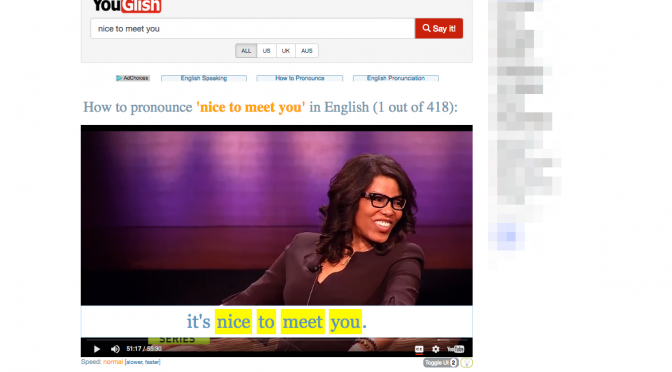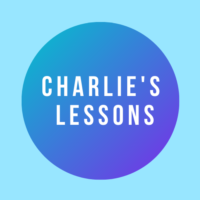Welcome back to Charlie’s Lessons. In this post, we’re taking a look at six websites that you can use to practice and improve your students’ English pronunciation and help teachers when teaching pronunciation.
In the English language classroom, pronunciation is often overlooked by English language teachers and coursebooks. This is why I wanted to write this post.
The second thing I’d like to mention before we continue is that on some of these websites, you may see or hear expressions such as:
“sound like a native speaker” or “speak like a native.”
When we are teaching pronunciation in the classroom, we should not make this the objective for our students. It is unrealistic for our students to put native speakers up on a pedestal as if they are the most perfect speakers of the English language. Remember, having an accent is absolutely fine. When I talk about teaching pronunciation in the classroom, I am talking about being intelligible or just being understood.
With that in mind, let’s start with the first website I would like to recommend to you today.
Website No.1
The first website I’d like to share with you today is forvo.com. Essentially, this is a pronunciation dictionary. It does ask you to make an account, but that’s not absolutely necessary to use the dictionary itself.
Immediately, we can see that we can choose a word and what kind of pronunciation we’d like to practice. In this case, I’m going to be choosing to use English. If we go to “Word,” then let’s put in a word like “comfortable,” which is a word that my students always struggle with. We’ve got some examples of how British English speakers would pronounce this word.
By repetition and listening to different sounds, we can get a good idea about how a British person would pronounce this word. And if we go to American pronunciation, then we can do the same.
One of the things I really like is that when you initially search for the word, you get all these example sentences. You can see the word in context. For example: “I’m comfortable in any social situation,” “I feel more comfortable speaking English.”
And what you can do when you see all these words in context is you can also start to notice collocation, the way this adjective collocates with certain nouns. For example: “a comfortable life” and “a comfortable armchair” and “comfortable clothes.” So not only are students getting to see the word in context, but they’re also getting a chance to notice how this particular word works with other words.

Website No.2
The second website I’d like to include is one that we’re probably all familiar with, which is bbclearningenglish.com. When we get to the pronunciation site, we can see we’ve got a focus on different sounds. We’ve actually got some really nice podcasts and also videos on how to become a better speaker or better listener. I think at the end of these courses, you actually get a certificate.
At the one about how to pronounce “have to.”, we have a video of Tim looking at “have to,” and then we also have a transcript of what he’s saying.

Another section I really like is called “The Sounds of English.” It has a seven-part series that goes into every single sound. This is something really good to do with your students. This is a really nice introduction for you and your students to, for this example, diphthongs. There’s also a series of videos on short vowel sounds and long vowel sounds too, so you can really cover all the main areas of English pronunciation with your students.
Website No.3
The third website I’d like to include in this video is called pronuncian.com. This is for students who are looking to imitate or mimic the American English accent.
We’re going to start with minimal pairs, which is a really great resource for teachers to use in the class to get your students identifying the difference between two vowel sounds.
We’d ask our students to listen to you or the website producing these two different sounds: “ate,” “eat.” And you’d ask your students to tell you which word contained the long “e” sound.
So, for example, “ate” or “eat,” “a” or “b,” or “one” or “two.”
In the “lessons” section we’ve got a focus on vowel sounds and also consonant sounds too. We see how the mouth should look like when we’re producing this sound and also an example sound. If we go to “Spelling,” we get to see what does this sound look like when it’s written. So, we’ve got “same,” “cake,” “safe,” but also “rain,” “paid,” “faith. This obviously is spelled differently from the first examples.
Here, we can ask our students to produce the sound either at the beginning of the word, in the middle of the word, or at the end of the word.
Finally, “Podcasts.” Now, these are short podcasts that look at the different sounds in English. There are now over 220 podcasts, and they’re nice and short, between 10 and 12 minutes. So, I think this is a really good suggestion to make for your students to use this at home to listen to. You can set this as homework and then get your students to comment on what they learned in each individual podcast, and you can identify the sounds in class.

Bonus website!
This is not website number four, but this is useful for teachers who would like to continue practicing minimal pairs with their students. This is on englishclub.com.
On this website, we’ve got sets of minimal pairs that you can practice with your students. We have from elementary level sets to advanced level sets. And actually, underneath each section, there is an audio file that plays each sound. So, you don’t even have to do this yourself. You can play this and get your students to treat this as if it was a listening task for your classroom.
Website No.4
Website number four is youglish.com. I’ve included this because this has got to be one of my favorites. All we need to do is put in a word that we’d like to know the pronunciation of.
I can either choose “All Accents,” “US,” “UK,” “Australian.” And if I go to this arrow here, I can actually choose other native English-speaking accents. Let’s just go to “All” and go to “Say It.” We can listen to examples of in context, used by native English speakers from YouTube videos or TED Talks. By clicking the “Next” button, we get to see examples of the word in action.
Another useful feature on this website is that when we see the text below, if we click on a word, we get to bring up some definitions, some synonyms, and also some example sentences pulled from the web. So, just imagine you’re teaching English and you have this website ready to go in the background. Just so, if you need it, you can suddenly pull on lots and lots of examples of how this word is pronounced.

Website No.5
Our fifth website is “IDEA,” which means “International Dialects of English Archive.”
This is really for pronunciation nerds.
When we get to the main website, we can go to “Dialects and Accents.” If we were looking for perhaps American English, then we go to “North America” and here we can choose the “United States of America” or “Canada.” If we were looking for UK English or British English, we go to “Europe.”
We have all of these different recordings of people speaking in English. We can learn as well where they’re from exactly. One of the interesting things is that every single recording contains the same pattern. The person speaking has to read out a passage, so what we hear first is themselves reading this passage. And this is the same for every single recording. They’ll then be asked some general questions about their early childhood. And so, what you’ll notice is that between the passage and the second recording, is that in the second recording, when he’s having to explain where he’s from, he’s a lot more natural when he’s speaking, and he’s going to be using a lot more authentic English.
One of the things you could do is take the transcript from these recordings and pop it into something like ChatGPT and get it to make some listening comprehension questions that are suitable for your students.
If you’re not familiar with how to use AI in the classroom in this way, then go check out my post on how to use ChatGPT to build custom lessons here.
Website no.6
The sixth and final website in this video is a website which is perfect for English language teachers because it contains lots of materials to get your students practicing pronunciation in a fun way. The name of this website is Hancockmcdonald.com.
We have all these different resources that you can take directly into the classroom. I love the spelling mazes. The idea here is to go A to B following only sounds that have the “G” sound. So, for example, we’d go “agree,” “signal,” “sugar,” etc.
We can download this as an attachment or as an image file, print this, and take it into our classrooms. And as you will see, there’s lots of spelling mazes practicing different sounds.
The biggest recommendation I can give you is to use this one here, which is called “The Pronunciation Journey,” which is on page two. We just go to select this, and the way this works is, remember we had that minimal pairs website earlier, we can use this to practice something called a “Pronunciation Journey.” I use this all the time with my students, and it really works.
I hope these six websites that can give teachers more confidence when teaching pronunciation in the classroom and also give your learners the skills and tools they need at home to continue practicing pronunciation when they’re not in class.
